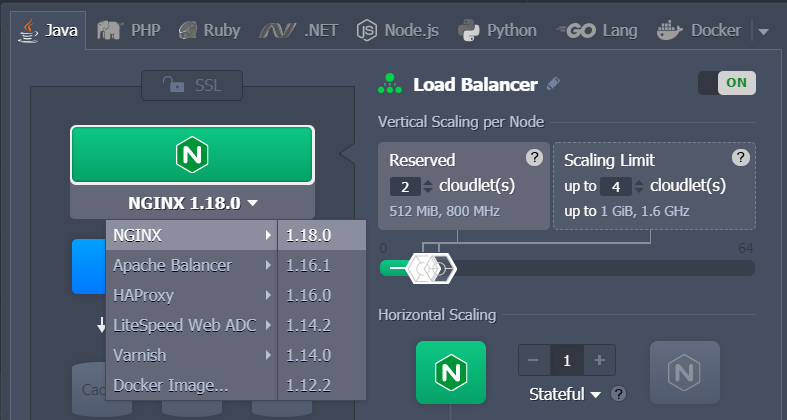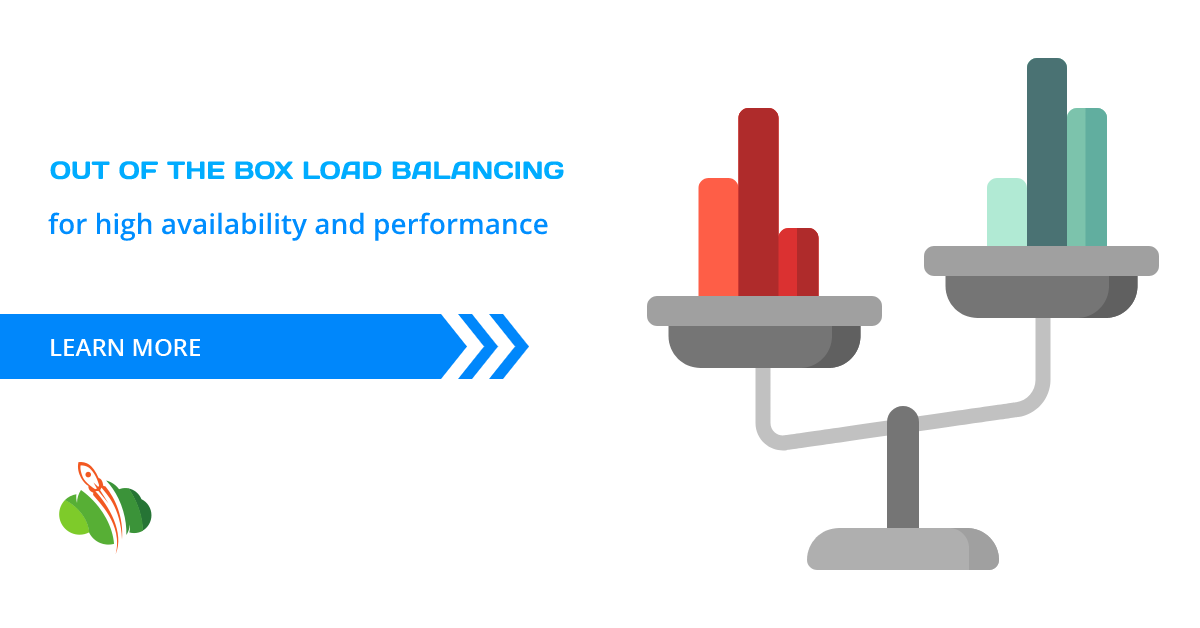Load balancing means traffic navigation and workload distribution across multiple components, which is executed by the dedicated type of nodes called load balancers. Within the Cloudlets Platform such instance(s) can be manually added into environment topology and will be automatically provided upon scaling application server to distribute requests between backends.

Cloudlets Platform makes load balancing possible on application layer and also on infrastructure layer providing Shared Load Balancer that handles requests to environments of all users.
You can choose among five managed load balancer stacks:
- NGINX provides great performance and ensures the efficiency of applications. Choosing NGINX requires no extra configurations: it offers a built-in Layer 7 load balancing and content caching to provide a cost-effective and highly available platform for applications hosting due to its scalability, security and high resource usage efficiency.
- HAProxy (High Availability Proxy) is able to handle huge traffic and offers high availability, load balancing, and proxying for TCP and HTTP-based applications. HAProxy uses a single-process, event-driven model, which consumes a low and stable amount of memory, enabling HAProxy to process a large number of concurrent requests simultaneously. This type of load balancer enables smart persistence and DDOS mitigation.
- Varnish is a web application accelerator (that was initially designed to be focused exclusively on HTTP) for dynamic websites with high traffic. Within the Cloudlets platform it is delivered with the NGINX server (run as an HTTPS proxy), providing the ability to work with the secure data and the Custom SSL. Choose Varnish in case your priority is the speed, achieved through the caching, making the projects faster by offloading the static objects delivery.
- Apache load balancer is an open source traffic distribution server with high customization options. Choosing Apache balancer you can configure it as required to enable security, high availability, speed, reliability, and centralized authentication/authorization.
- LiteSpeed Web ADC (Application Delivery Controller) is a commercial high-performance HTTP load balancing solution. It implements all latest technologies (e.g. HTTP/3 or QUIC transport protocol support), provides advanced security (web application firewall protection, layer-7 anti-DDOS filtering, etc.), enterprise-level performance (caching, acceleration, optimization, offloading, etc.) and more.
Which of the above mentioned load balancers you prefer? Try them out at cloudlets.com.au and benefit from client requests or network load efficiently distribution across multiple servers, enabling high availability and reliability due to automatic sending requests only to servers that are online.
